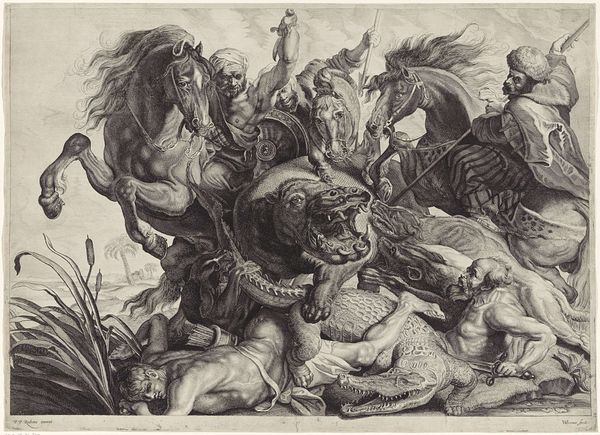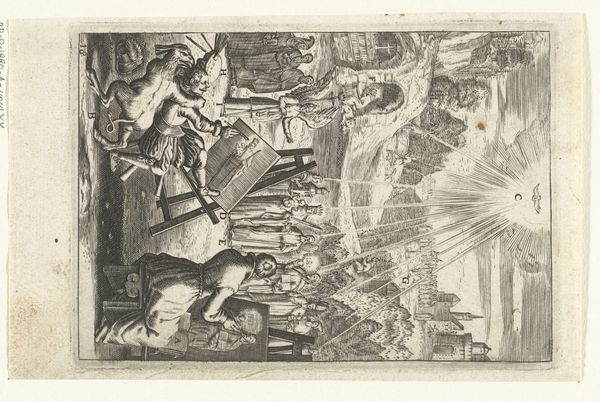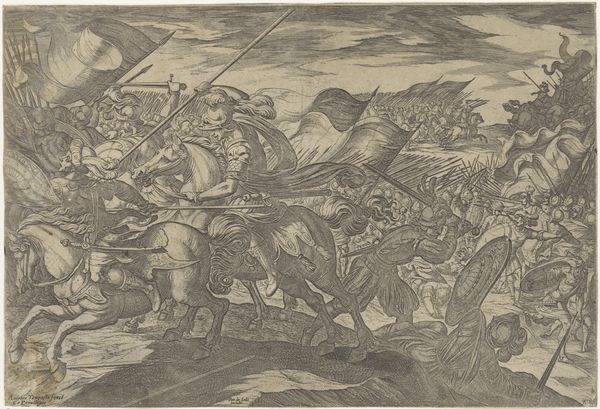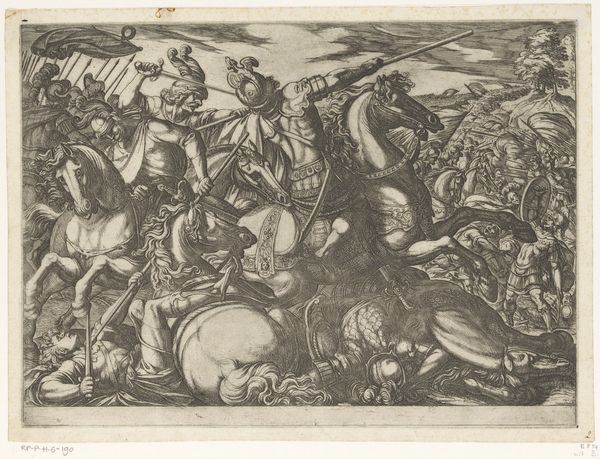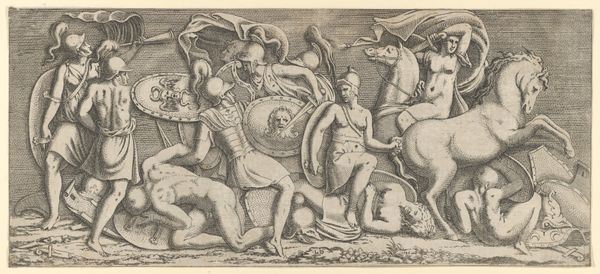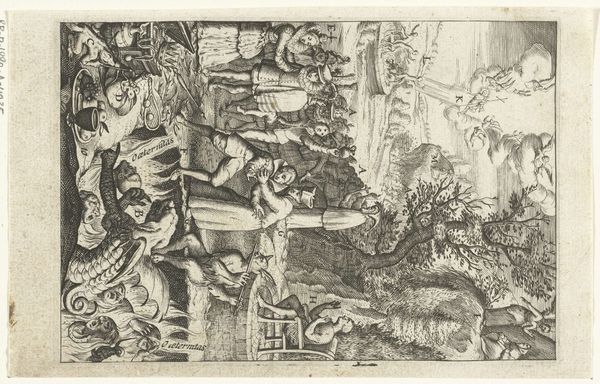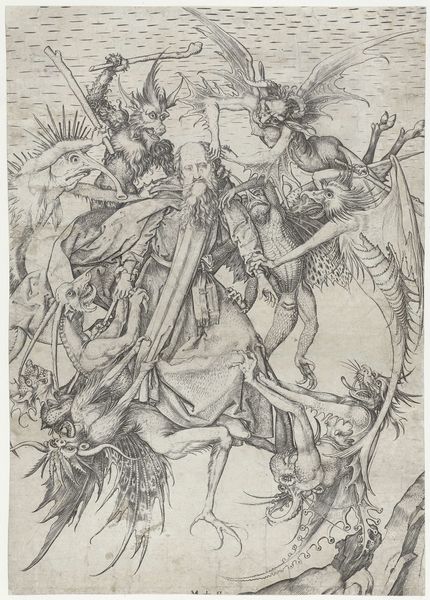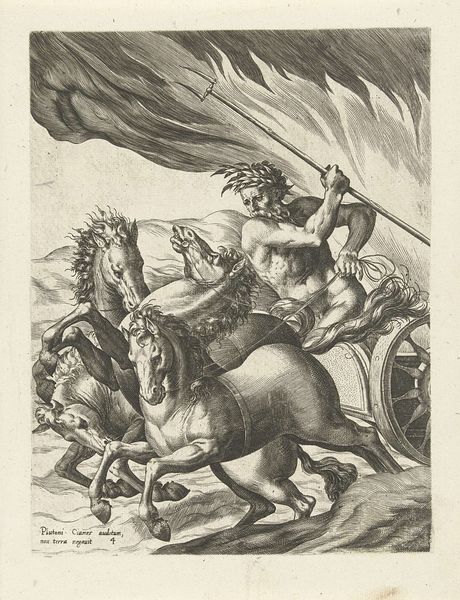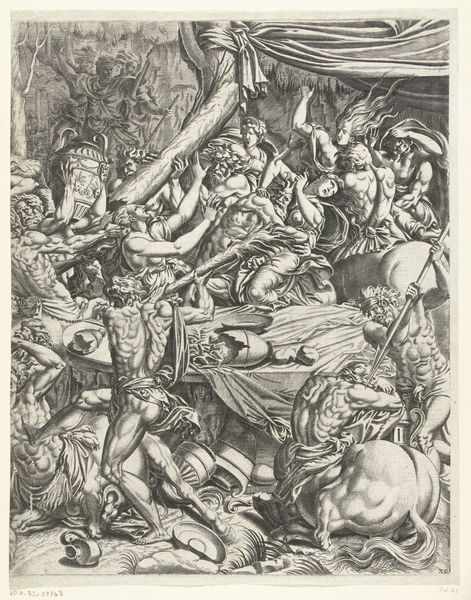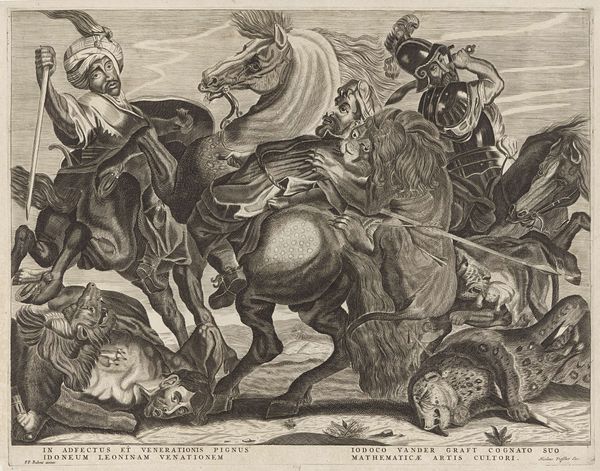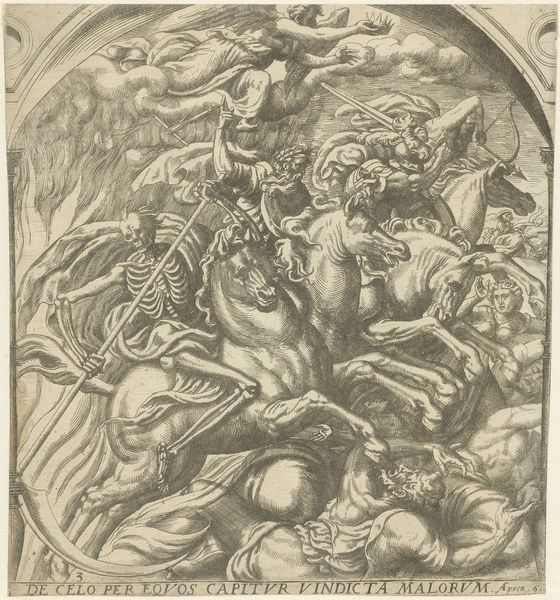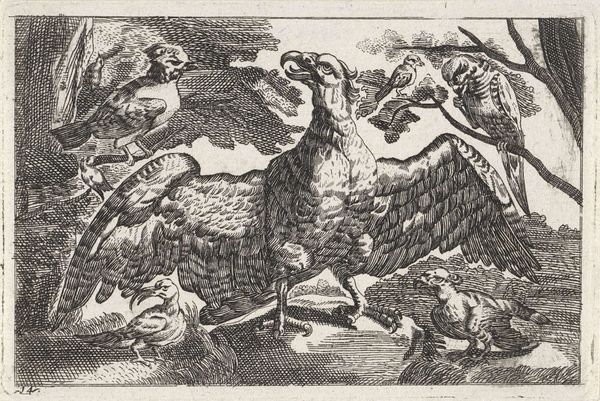
print, metal, engraving
#
allegory
#
baroque
# print
#
metal
#
form
#
line
#
history-painting
#
engraving
Dimensions: height 141 mm, width 215 mm
Copyright: Rijks Museum: Open Domain
Jean Lepautre made this Wapentrofee, or trophy of war, using etching, probably in the mid-17th century. Consider how the proliferation of printed images at this time was made possible by the development of capitalist markets. Etching is a printmaking technique that involves using acid to cut into a metal plate, which is then inked and used to create multiple impressions on paper. This allowed for the mass production of images, and Lepautre was one of the most prolific designers of his era. The subject matter here is telling. Trophies of war were often commissioned by those in power to celebrate military victories and consolidate political dominance. Here, the artist has grouped together shields, weapons and flags to create an image of martial grandeur. The effect relies on the precise wielding of a sharp tool; the lines must be expertly placed, not just for visual effect, but for efficiency. By understanding the social context and production techniques of the Wapentrofee, we can challenge traditional distinctions between fine art and craft, and gain insight into the wider cultural and economic forces that shaped its creation.
Comments
No comments
Be the first to comment and join the conversation on the ultimate creative platform.
